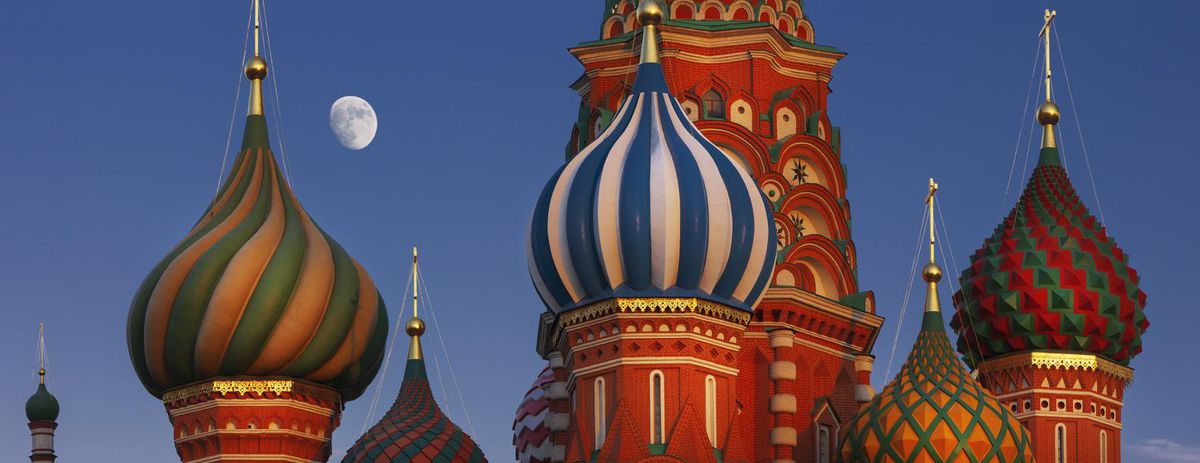
The Moon rises between the domes of St Basil’s Cathedral. A First Quarter Moon will be visible in … [+]
getty
Get ready for “afternoon Moon” week!
Where is the Moon today? Can we ever see the Moon in the day? Yes! If you think the Moon only or mostly comes out at night, think again.
If you know where to look it’s not only possible to see the Moon during daylight hours, but it’s a fact that our Moon spends just as much time in our daytime sky as it does in our nighttime sky.
So why is it Moon-in-the-day week this week?
Between First Quarter Moon—when our satellite is half-lit from our point of view on Earth—and Full Moon, the Moon becomes more easily visible in the afternoon and early evening.
Here’s exactly when and where to look to see the Moon in the afternoon:
Why we can see the Moon in the afternoon this week
Have you ever wondered how can you see the Moon in the day? The Moon takes 29 days to orbit Earth—one “moonth”—and is always 50% lit by the Sun. However, what we see from Earth—its phase—changes each night as the Moon travels further or closer to the Sun on its orbit around us.
New Moon—which was last on Thursday, February 11, 2021–is the phase when it’s between Earth and the Sun, so although it’s 50% illuminated by the Sun, only its backside is lit-up so we see nothing. Besides, a New Moon is extremely close to the Sun.
If you start looking at a crescent Moon a night or two after a New Moon you’ll notice that it moves slightly further east from the Sun each night. For example, a slim crescent Moon observed one night after New Moon sets just minutes after sunset, but the next day the crescent is slightly bigger, and it sets about 50 minutes after sunset.
That pattern carries on, with a “waxing” Moon setting about 50 minutes later each night because it’s moved farther away from the Sun.

A First Quarter Moon will be visible in the afternoon this coming week in the eastern daytime sky as … [+]
getty
Get to First Quarter Moon—which was on Friday, February 19—and the Moon is half-lit and has completed a quarter of its orbit.
This is when the “afternoon Moon” begins, and if you think about it, it makes perfect sense that we can see the Moon out in the day. Because if the Moon is a quarter of its journey around Earth it must be roughly “half the sky” from the Sun (since the sky we see is only 180º of a 360º sphere).
So around midday, when the Sun has already risen in the east and is now at its highest in the daytime sky, the Moon will be rising in the east. As the Sun peaks and then falls towards the west the Moon rises higher in the eastern sky. Since it’s waxing from First Quarter it appears to be more and more illuminated each day as it rises about 50 minutes earlier. On the flip side it means the Moon sets about 50 minutes later in the west each night. This week that means well after midnight.
The result of all this is an “afternoon Moon” that becomes more obvious in later afternoon as the week wears on, until—on Saturday, February 27, 2021—the Moon rises in the east just as the Sun sets in the west. That, of course, is a Full Moon.
That’s why we see the Moon in the day in the week before a Full Moon.
The exact same thing happens in reverse the week after a Full Moon, when our satellite can be seen sinking towards the western horizon during the morning.

Moonrise times for this week for three major world cities.
Jamie Carter (data from TimeAndDate.com)
When you can see the Moon in the afternoon this week
All you really have to do is look to the east in the afternoon, but if you want to know in advance then use a Moon calculator for your location.
As an example, above are the moonrise times for this week for three major world cities (look east about an hour or so after the moonrise time to have the best chance):

All phases of the moon on a clear dark sky with stars.
getty
Phases of the moon
The Moon is always half-lit by the sun, but from the surface of the Earth, it doesn’t look that way. That’s because the Moon is constantly orbiting, getting further from the sun as it waxes to full moon, then closer to it as it wanes to a new moon. Moon-watchers have devised eight distinct phases for our satellite, each of which lasts for about 3.5 days:
- New (rises at sunrise, sets at sunset)
- Waxing Crescent
- First Quarter (rises at noon, sets at midnight)
- Waxing Gibbous
- Full (rises at sunset, sets at sunrise)
- Waning Gibbous
- Third Quarter (rises at midnight, sets at noon)
- Waning Crescent
Wishing you clear skies and wide eyes.
This article is auto-generated by Algorithm Source: www.forbes.com


